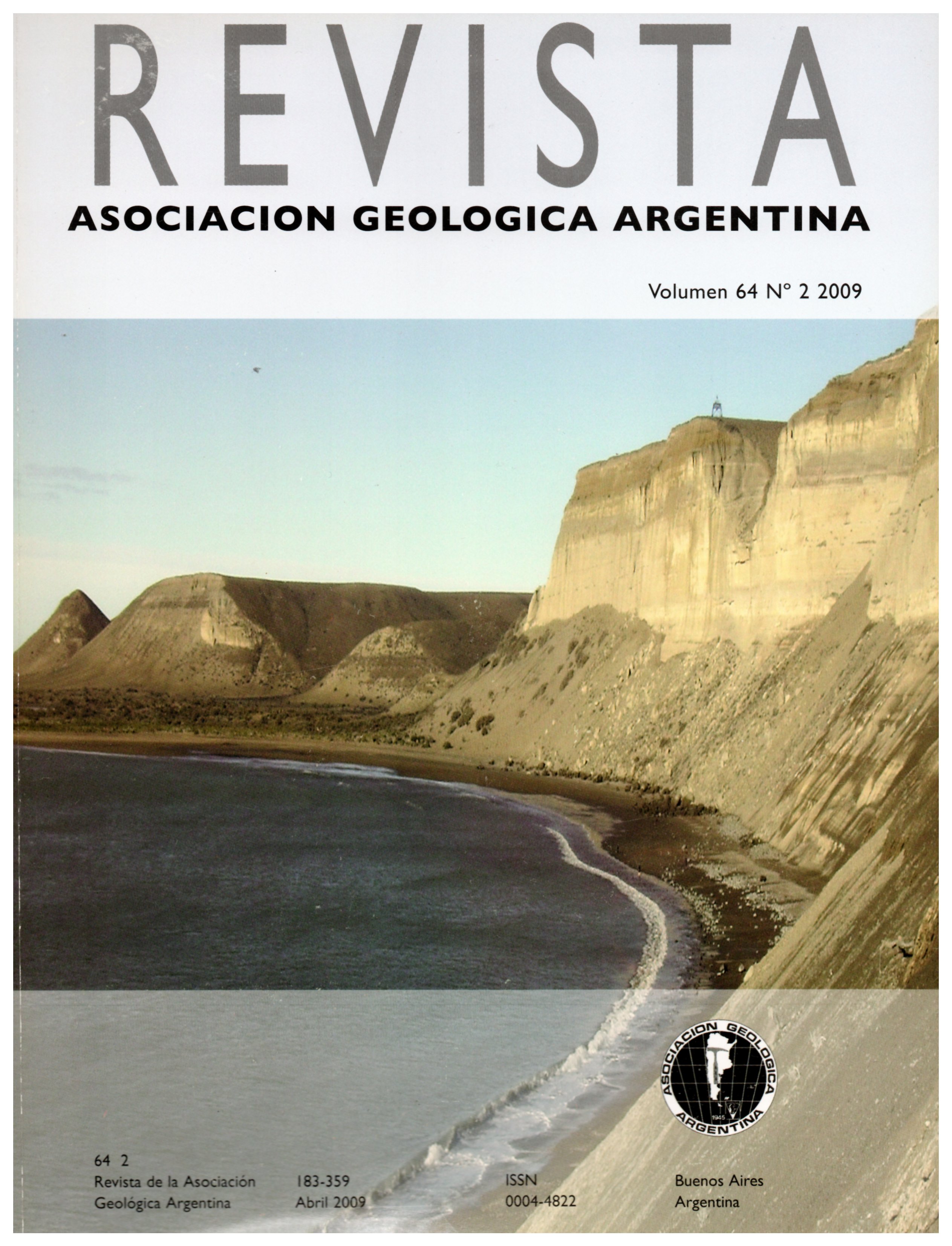Tectonic evolution of the Loncopué trough: Structure of the Quaternary Huecú depocenter and its relation to the sedimentation and volcanism
Main Article Content
Abstract
The Huecú basin is located at the central part of the large Loncopué retroarc trough. Its volcanic, volcaniclastic, lacustrine and fluvial filling is directly related to neotectonic activity in the area. The basaltic eruptions are reflecting different pulses associated with the development of extensional faults and tensional fractures. Geophysical potential methods have identified basement involvement in the extensional deformation that affected the Tertiary sequences of the area during the last 5 Mys. Neotectonic features in Quaternary volcanic sequences suggest the persistence of these subsidence mechanisms in the Huecú depocenter. These faults are directly connected to the basement segmentation identified by gravimetric and magnetometric studies. The historical floods produced by the Agrio river damming, are related to fisural eruptions and demonstrate the high probability that retroarc volcanic eruptions may occur again. The recognition of flooded areas that are forming the youngest sedimentary levels in the Huecú depocenter shows potential areas of active retroarc spreading in the Neuquén area associated with neotectonic and seismic processes.
Article Details

This work is licensed under a Creative Commons Attribution-NonCommercial 4.0 International License.
Nota de copyright
Los autores conservan los derechos de autor y garantizan a la revista el derecho de ser la primera publicación del trabajo licenciado según una licencia de atribución Creative Commons que permite a otros compartir el trabajo con el reconocimiento de la autoría y de la publicación en la que se publicó por primera vez.
Declaración de privacidad
Los nombres y direcciones de correo electrónico introducidos en esta revista se usarán exclusivamente para los fines declarados por esta revista y no estarán disponibles para ningún otro propósito u otra persona.

